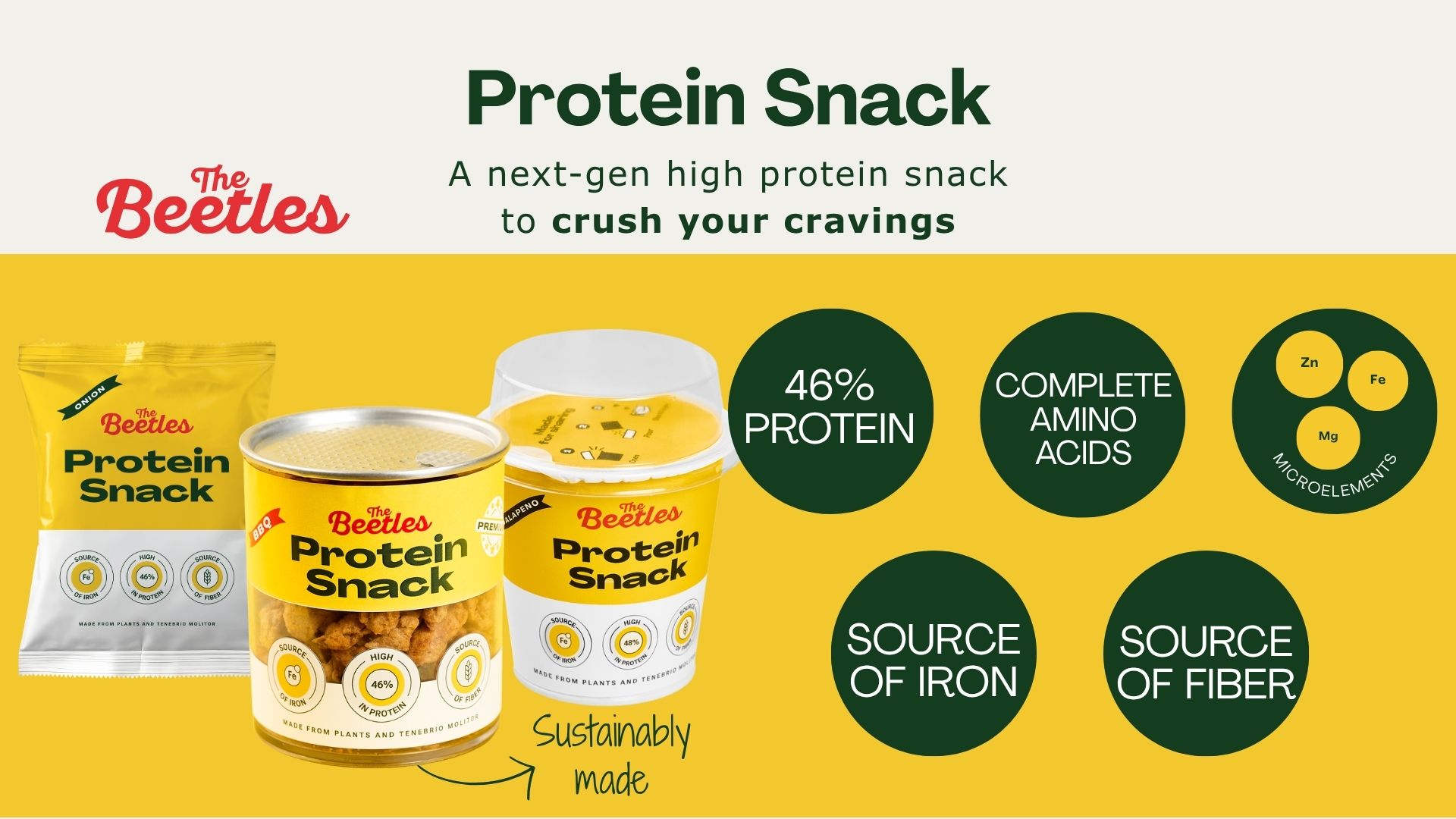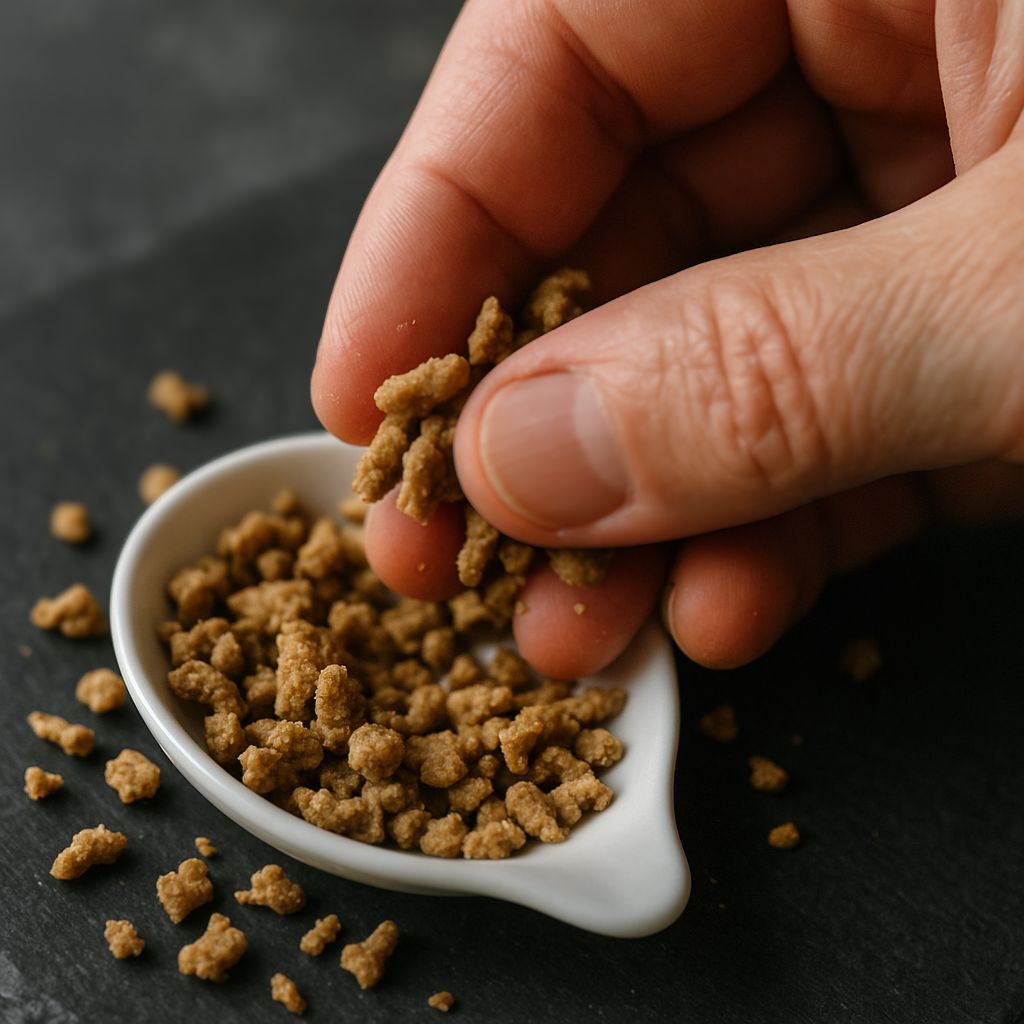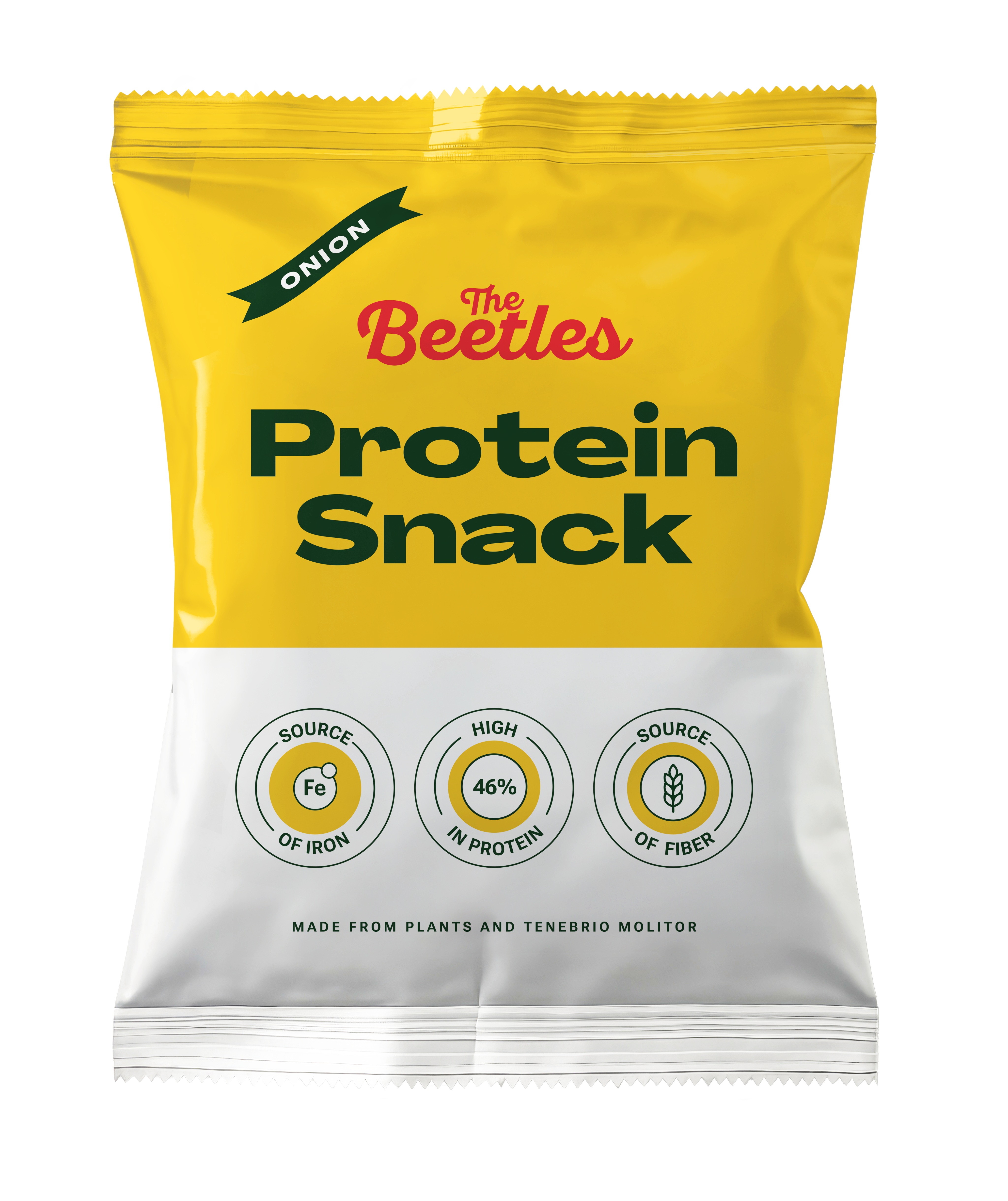
Packed with complete, high-quality protein from sustainable insect and plant sources, this delicious, crunchy bite delivers the energy you need without the guilt. Whether you’re powering through your day or reaching for a clean, eco-friendly option post-workout, The Beetles Protein Snack combines bold flavor, balanced nutrition, and planet-positive impact. It’s not just a snack — it’s a small revolution in every bite.

The Beetles Protein Snack delights the senses with its rustic, brownish appearance and irregularly shaped pieces, each coated in a flavorful blend of visible spices.
Varying in size—about 7mm wide and 15mm long—these crunchy bites offer a satisfying texture that feels as natural as it looks.
The aroma is rich and appetizing, marked by the familiar warmth of seasoning without any foreign notes. With each bite, you’ll experience a well-balanced taste: savory spices layered over subtle nutty and pea-like undertones. Available in three bold flavors — Cream & Onion, Jalapeño, and BBQ — there’s a perfect match for every craving.





The Beetles Protein Snack is crafted for flexibility and impact—perfect for both retail and HoReCa. Available in a variety of formats to suit every need: single-serve pouches, regular and premium cups for on-the-go snacking, and a bag for culinary professionals. Whether you’re enhancing your retail shelf with sustainable protein options or adding innovation to foodservice menus, The Beetles deliver. Packed with meaty texture, bold umami flavor, and excellent cooking performance, this insect-powered snack fits seamlessly into everything from gourmet bites to fast-casual concepts. Meet the demand for nutritious, eco-conscious protein with a format that fits your world.